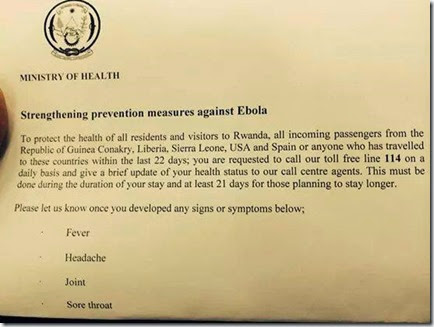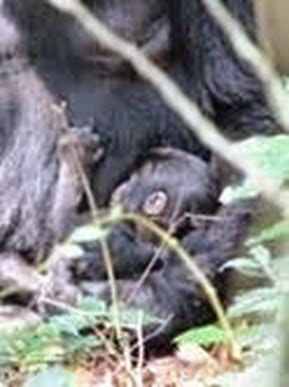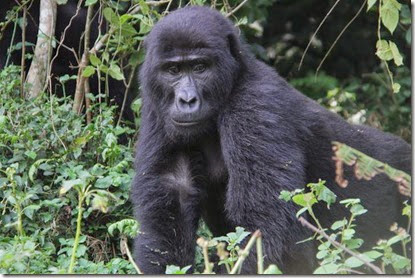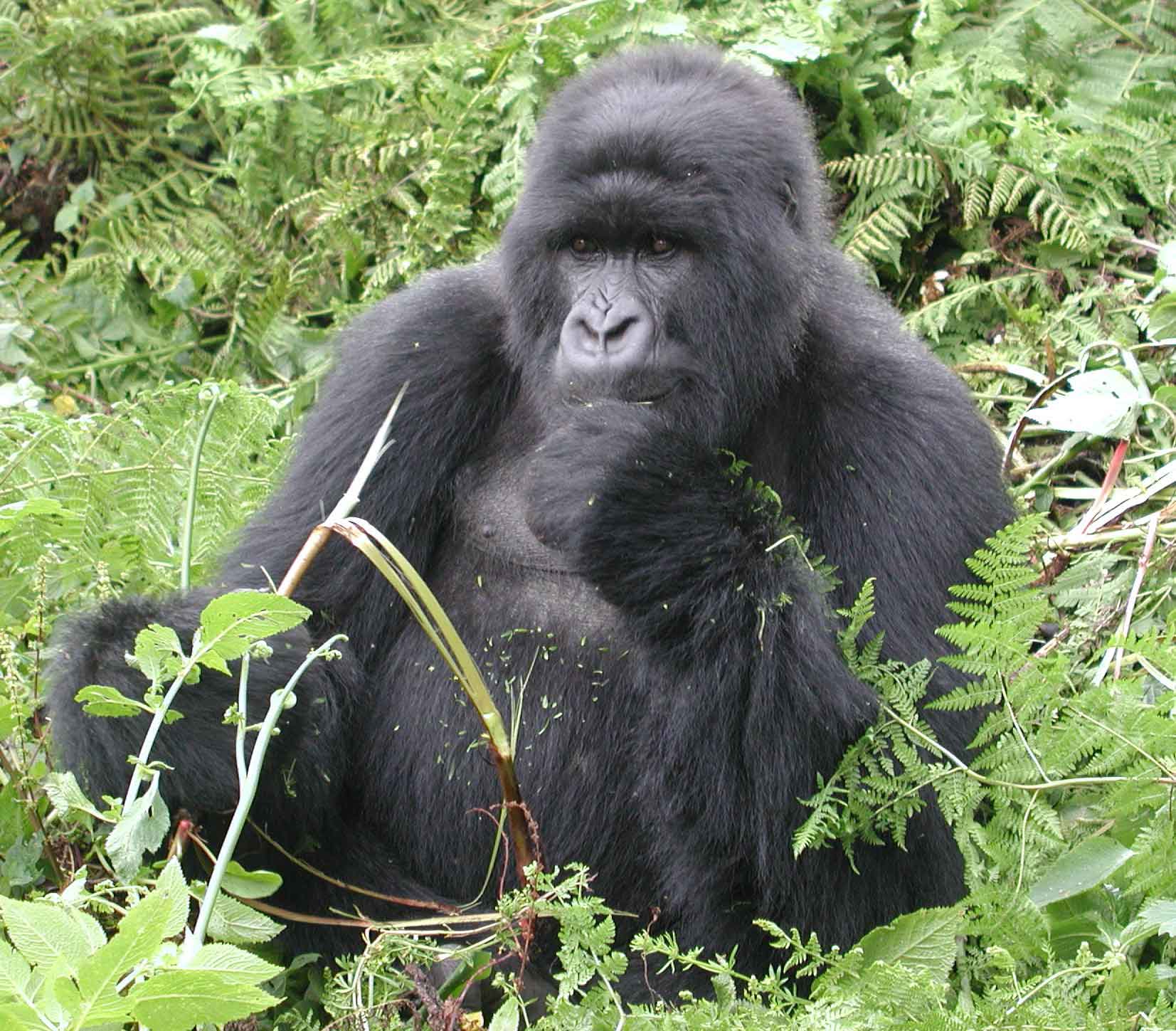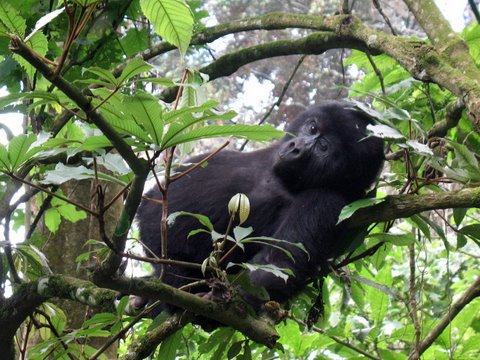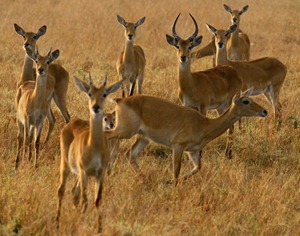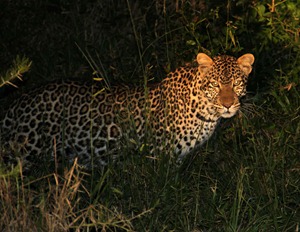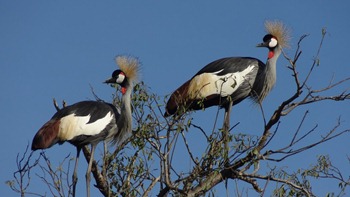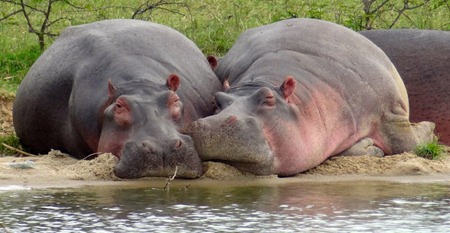Rwanda will celebrate the birth of 18 baby gorillas at the 10th anniversary of Kwita Izina, the annual gorilla naming ceremony. The event will take place in Kinigi, Musanze on 1 July 2014. This year’s theme is ‘A Decade: Conserving-Empowering-Growing’.
“On this occasion, we will not only celebrate the birth of one of the world’s most endangered species but also the efforts of individuals, organisations and nations involved in the preservation of these rare animals,”
Rwanda’s community led conservation efforts have led to a 26.3% growth in the population of gorillas since 2003 and Kwita Izina has been key to this success. This is also thanks to the Government of Rwanda which has ensured tourism flourishes in a secure and enabling environment.”
Early this year, Kwita Izina won second prize in the UNWTO Ulysses Award for Innovation in Public Policy and Governance. The Rwanda Development Board recognises enhanced national conservation practices and community ownership of projects around the Volcanoes National Park that have seen beneficiaries empowered and their lives improved.
Rwanda’s tourism sector has also been growing remarkably. In 2013, Rwanda hosted 1,137,000 visitors who generated $294m, up from $62m in 2000. This increase is attributed to Rwanda’s attractiveness as a travel destination, new airline routes, especially in West Africa, spearheaded by our national carrier RwandAir, an increase in unique experiences for tourists and the county’s stability and welcoming visa policies.
Kwita Izina will be marked by a series of activities starting with the launch of Basumba Primary School in Bigogwe, Nyabihu District on 26 June 2014. The school of six classrooms has been built with funds from the Shared Revenue Scheme which gives 5% of tourism profits from National Parks back to the communities surrounding the gorilla habitat. This launch will be followed by a mix of conservation, business, cultural and entertainment activities.
Kwita Izina is inspired by the ancient Rwandan tradition of naming babies soon after they are born. In the nine years since the event was established, 161 mountain gorillas have been named in a celebration of nature and the communities who protect the magnificent animals.
Kwita Izina Activities:
26 June: Official launch of Basumba Primary School in Bigogwe, Nyabihu District. The school of six classrooms has been built with funding from the Shared Revenue Scheme. It will enable over 380 children to easily access education facilities.
28 June: Global Umuganda. Participants will have an opportunity to participate in the Global Umuganda. The community work reflects on the culture and commitment of Rwandans to clean and conserve the environment.
28 June: B2B meetings, Serena Hotel, Kigali: This platform will provide an opportunity for local tourism operators to showcase Rwanda tourism experiences to domestic, regional and international markets.
29-30 June: Gorilla Conservation and Community Exhibition at Musanze Stadium. The aim of the exhibition is to showcase what has been achieved in conservation and community empowerment through the 5% revenue sharing scheme.
30 June: Igitaramo (Community Party) in Kinigi is a night of cultural immersion with performances from local dance troupes and musicians.
1 July: Kwita Izina Gorilla Naming Ceremony at Volcanoes National Park
Key Tourism and Hospitality Facts and Figures:
Rwanda has three National Parks: Akagera National Park, Nyungwe National Park and Volcano National Park.
Rwanda has many unique tourist attractions including the mountain gorillas, golden monkeys, eco-tourism, heritage & leisure experiences.
Rwanda is becoming increasingly attractive for Conference Tourism (MICE); recently hosting the African Development Bank meetings and will host the World Export Development Forum in September, among other events.
In 2010, Rwanda hosted 666,000 visitors who generated US$ 200M - a 14% increase from 2009. In 2013, Rwanda hosted 1,137,000 visitors who generated $294m, up from $62m in 2000.
Tourism receipts are expected to grow at a compound annual rate of 25% until 2017 (EDPRS 2 targets).
Rwanda has over 380 accommodation establishments and approx. 6,500 accommodation rooms. Upper range occupancy rate is 70%, with foreigners accounting for 97% of beds availed.
The rapid growth of RwandAir in addition to other airlines serving Kigali such as KLM, SN Brussels, Qatar Airways, Turkish Airlines, Kenya Airways and Ethiopian Airlines allow for easy access to the country from all over the world.
For gorilla permits availability for other months, most certainly the dates are available but please contact us to confirm before you go ahead with your flights bookings.
In case you want gorilla tracking in Uganda, kindly drop us an email (info@gorillasandwildlifesafaris.com and gorillasandwildlifesafari@gmail.com) and we will let you know of the possibilities.
Rwanda and Uganda Gorilla Treks: Tracking Gorillas and Chimps across Uganda and Rwanda in Volcanoes National Park, Bwindi Impenetrable, Kibale National Park
4 days Uganda+ Rwanda Gorilla
This is a 4 day safari which starts and ends in Kigali- Rwanda with 2 gorilla permits (for Parc Nationale des Volcanoes and Bwindi in Uganda) included in the. Having a chance to see some of the last remaining 840 mountain gorillas in the world is a wonderful experience. It offers you an opportunity to track gorillas two times.
5 Days of Rwanda Uganda gorillas, primates with Golden Monkeys Tracking trekking Rwanda
This is a 4 day safari which starts and ends in Kigali- Rwanda. One gorilla permit for Parc Nationale des Volcanoes is included in the cost but the other gorilla trackings require other permits to be paid at time of booking. Having a chance to see some of the last remaining 700 mountain gorillas in the world is a wonderful experience. It offers you an opportunity to track gorillas two times. Parc Nationale des Volcanoes in Rwanda has five habituated gorilla families and tracking most groups in the afro-montane forest usually takes a few hours. You can also climb a volcano, visit the remains of Dian Fossey's grave or visit the endangered golden monkey.
5 days Uganda+ Rwanda Gorillas
with gorilla treks in Volcanoes National Park and Bwindi Impenetrable National Park. The tour starts and ends in Uganda. You can choose to track golden monkeys instead of doing a second gorilla trek in Rwanda.
5 days Rwanda+ Uganda Gorilla tracking tour
This is a 5 day safari which starts and ends in Kigali- Rwanda with 2 gorilla permits (for Parc Nationale des Volcanoes and Bwindi in Uganda) included in the. Having a chance to see some of the last remaining 700 mountain gorillas in the world is a wonderful experience. It offers you an opportunity to track gorillas two times and thus have a totally different experience with two different gorilla families each in a very unique habitat.
5 days Gorillas trek Rwanda and Safari in Queen Elizabeth National Park Uganda
This is a 5 day safari which starts and ends in Kigali- Rwanda. One gorilla permit for Parc Nationale des Volcanoes is included in the cost but the other gorilla trackings require other permits to be paid at time of booking. Having a chance to see some of the last remaining 700 mountain gorillas in the world is a wonderful experience. It offers you an opportunity to track gorillas two times. Parc Nationale des Volcanoes in Rwanda has five habituated gorilla families and tracking most groups in the afro-montane forest usually takes a few hours. You can also climb a volcano, visit the remains of Dian Fossey's grave or visit the endangered golden monkey.
Queen Elizabeth National Park to see wildlife like lions, leopard, elephants, hippos, buffalo plus over 500 bird species.
5-day Uganda Rwanda gorillas tracking safari + Lake Bunyonyi Canoe Trek
with gorilla treks in Volcanoes National Park and Bwindi Impenetrable National Park. The tour starts and ends in Uganda or Rwanda. You can choose to track golden monkeys instead of doing a second gorilla trek in Rwanda.
